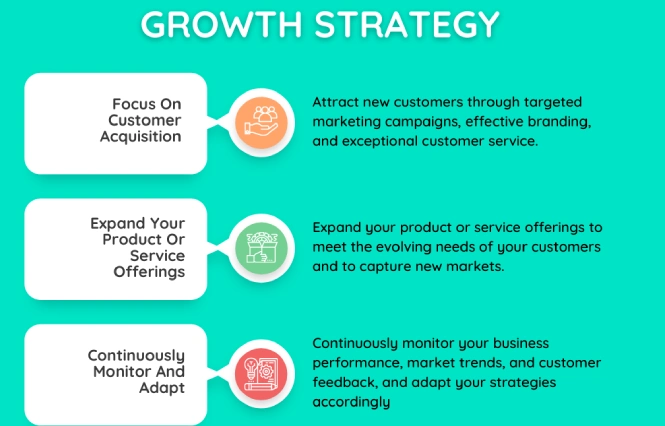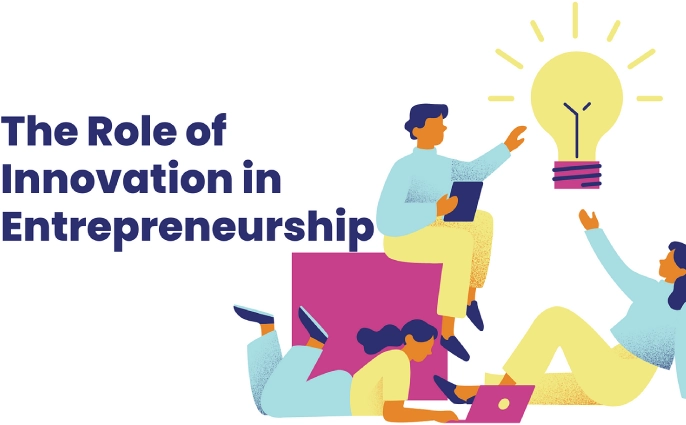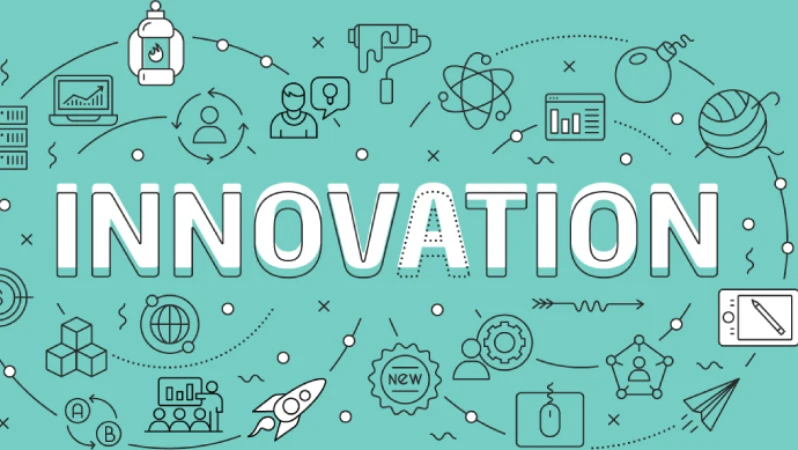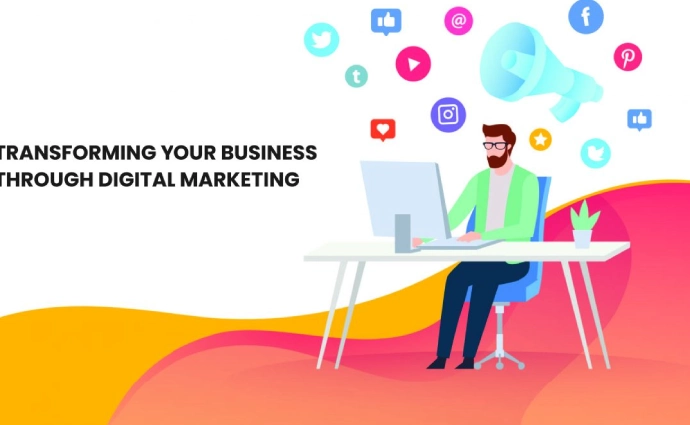Transforming Education with Innovative Technology for Learning
In today’s world, education is changing fast. Schools, teachers, and students are now using new tools to make learning easier and more exciting. This change is possible because of innovative technology for learning. Technology like computers, tablets, and interactive boards make it simpler for students to understand difficult ideas. With these tools, learning can happen anywhere, not just in classrooms.
How Technology Supports Personalized Learning in Education
Innovative technology for learning helps schools offer personalized lessons for students. This means each student can learn at their own pace. For example, with online learning platforms, fast learners can move ahead quickly, while others can take extra time to understand topics better. Technology also helps teachers see where each student needs more support, ensuring no one falls behind.
Creating Interactive Learning Environments
Interactive learning lets students actively take part in lessons instead of only listening. Teachers now use technology to create fun, engaging lessons that help students enjoy what they’re learning. Tools like videos, quizzes, and games keep students interested and make it easier for them to remember information. Thanks to innovative technology for learning, education has become more exciting and less boring.
Technology for Group Projects and Collaboration
Innovative technology for learning has also changed the way students work together. With digital tools, students can do group projects even if they’re not in the same place. Online platforms and apps allow students to instantly share ideas, documents, and files. They can also discuss their projects and ask questions in real time. Working together in this way helps students learn from each other and builds important communication skills.

Benefits of Blended Learning in Innovative Technology for Learning
Blended learning combines online and in-person classes, giving students the chance to study at home and still get help from teachers at school. This way, students can explore new topics on their own and then strengthen their understanding by practicing and asking questions in the classroom.
By mixing these methods, students get to learn at their own pace, and teachers can track their progress more easily. This use of innovative technology for learning has changed education by making it more flexible and available, helping students engage with what they’re learning and improving their overall success.
Challenges of Using Technology in Education
While technology has many benefits in education, it also brings challenges. First, not all schools can afford to provide devices and internet for every student. This causes a gap between students with access to technology and those without.
Teachers also need extra time and training to learn how to use new tools, which can be hard in busy schools. Spending too much time on screens may also affect students’ focus and social skills. Even though there are these challenges, innovative technology for learning is growing, and efforts are being made to solve these issues and improve the learning experience.
While innovative technology for learning has many benefits, there are also challenges. Some schools don’t have the budget to buy the latest devices, and teachers might need extra training to use new tools. Also, some students may not have internet access at home, making it harder to keep up with online lessons. Schools need to work together to find ways to solve these issues.
The Future of Innovative Technology for Learning
In the future, innovative technology for learning will keep improving. New tools and apps will make learning even more interesting. Things like virtual reality (VR) and artificial intelligence (AI) will bring even more changes. VR can help students feel like they are in different places, like visiting ancient cities or exploring space. AI can help teachers make customized lessons for each student.
Emerging Technologies in Innovative Technology for Learning
Education is changing quickly because of new tools and ideas. Today, innovative technology for learning includes advanced tools like artificial intelligence (AI), virtual reality (VR), and augmented reality (AR). These technologies are making education more interesting, helping students understand hard subjects, and even making learning fun.
Artificial Intelligence (AI) in Learning
Artificial Intelligence (AI) is a type of technology that can help teachers and students in many ways. AI can check homework and give students quick feedback. It also creates special lessons for each student, which means they learn at their own speed. For example, if a student struggles with math, AI can show them extra practice questions. With innovative technology for learning like AI, teachers can spend more time helping students directly.
Virtual Reality (VR) for Immersive Learning
Virtual Reality (VR) is a technology that lets students experience different places and events without leaving their classrooms. For example, students can take a virtual field trip to ancient Egypt or visit the moon! This makes learning more exciting and helps students remember what they learn. Innovative technology for learning like VR is perfect for subjects like science, history, and geography, where seeing things up close makes a big difference.
Augmented Reality (AR) for Interactive Lessons
Augmented Reality (AR) is another exciting technology that adds digital images and information to the real world. For instance, students can point a tablet at a science book, and AR will show a 3D model of a planet or an animal. This makes learning more interactive, and students feel like they are part of the lesson. Innovative technology for learning with AR helps students explore topics more deeply, making subjects like biology or physics easier to understand.
Benefits of Using Emerging Technologies in Education
Using new tools in education brings many benefits. Innovative technology for learning like AI, VR, and AR helps students stay engaged, learn faster, and understand complex topics. These technologies make lessons interesting and enjoyable, helping students remember information better. Plus, with these tools, learning can happen anywhere , not just in a classroom.
Personalized Learning Platforms in Innovative Technology for Learning
What is Personalized Learning?
Personalized learning means each student learns at their own pace and level. It’s like having a lesson that fits perfectly just for you. In the past, all students in a class learned the same way. But now, with innovative technology for learning, each student can follow their own path. Personalized learning helps students understand subjects better, whether they need extra help or are ready for more advanced topics.
How Technology Supports Personalized Learning
Innovative technology for learning uses online platforms to make personalized learning possible. With these platforms, students get lessons and practice that match their skills. For example, if a student finds math hard, the platform can offer simpler lessons first. On the other hand, if a student is good at science, the platform can challenge them with harder questions. Technology helps teachers see how each student is doing, so they know who needs extra help and who is ready for more.
Examples of Personalized Learning Platforms in Innovative Technology for Learning
Some popular platforms in innovative technology for learning are Khan Academy and IXL. These platforms offer lessons and activities for students of all grade levels. They provide videos, quizzes, and feedback on answers. Each student can learn at their own speed, reviewing lessons when they need more practice or moving ahead when they feel ready.
Benefits of Personalized Learning for Students with Innovative Technology for Learning
Innovative technology for learning through personalized platforms has many benefits. First, it makes learning less stressful because students don’t feel pressure to keep up with others. Each student can focus on their own progress.
Second, students gain confidence as they master each topic before moving on to the next. Lastly, personalized learning helps students enjoy their lessons more since they can choose topics that interest them. This way, learning becomes more fun and engaging for everyone.
Challenges in Personalized Learning
While innovative technology for learning makes personalized learning easier, there are still some challenges. Not every school has the money to buy these platforms or enough computers for students. Teachers also need time to learn how to use these systems effectively. Sometimes, students may not have internet access at home, which can make it harder to keep up with assignments.
Collaborative Learning through Innovative Technology for Learning
How Technology Helps Students Work Together
Innovative technology for learning allows students to work together easily, even if they are not in the same place. With tools like Google Classroom, Microsoft Teams, and Zoom, students can share ideas, files, and projects in real time. They can also talk to each other through video calls, which helps them solve problems as a team. Collaborative learning helps students understand different viewpoints and learn teamwork skills.
Benefits of Collaborative Learning in Education
Working together with innovative technology for learning makes lessons more interesting. Students can discuss what they are learning, ask questions, and get instant feedback from their classmates or teachers. This builds confidence and helps them remember lessons better. Collaborative learning also teaches communication and respect, skills that will help students in future jobs.
Gamification in Innovative Technology for Learning
What is Gamification in Learning?
Gamification in Innovative Technology for Learning
Gamification means adding fun game, like features to learning activities. With innovative technology for learning, teachers use gamification to keep students interested and motivated. This can include earning points, completing levels, or getting rewards for finishing tasks. When learning feels like a game, students become more excited and eager to learn.
Benefits of Gamification in Education
Using innovative technology for learning with gamification helps students stay engaged. Games make it easier to understand tough subjects like math, science, or history. For example, students can practice math by solving problems to earn points or badges. This approach makes learning enjoyable, so students don’t feel as much pressure. Additionally, gamification helps students remember what they learn better because they enjoy the process. Overall, gamification makes education fun and effective!
FAQ
Q: What is innovative technology for learning?
Innovative technology for learning uses digital tools to improve education by making lessons more interactive, personalized, and accessible for students.
Q: How does AI help in innovative technology for learning?
AI helps by providing personalized lessons, quick feedback, and support for each student, making learning easier and more efficient.
Q: What is personalized learning?
Personalized learning allows students to learn at their own pace and level, using technology to adapt lessons to their individual needs.
Q: What are examples of innovative learning tools?
Examples include virtual reality (VR), artificial intelligence (AI), and augmented reality (AR), which make learning more engaging and interactive.
Q: How does virtual reality improve learning?
VR lets students experience places or events virtually, like taking field trips or exploring space, making learning more immersive.
Q: Why is technology important in education?
Technology helps make lessons interesting, allows for remote learning, and gives teachers tools to track student progress effectively.
Q: What are the challenges of using innovative technology for learning?
Challenges include costs, lack of internet access for some students, and the need for teacher training to use new tools effectively.
Conclusion:
Innovative technology for learning is transforming education by making it more engaging, personalized, and collaborative. As technology continues to develop, the possibilities for learning will keep expanding, helping students succeed in ways that were never possible before.
Personalized learning platforms are an essential part of innovative technology for learning. They allow each student to learn in the way that works best for them, helping them understand lessons better and feel more confident. As technology continues to grow, personalized learning will become more accessible, making education even better for students everywhere.














